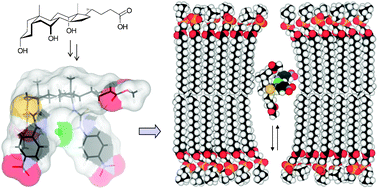
P. R. Brotherhood, A. P. Davis*
Chem. Soc. Rev., 2010, 39, 3633-3647
Abstract
Anion binding and transport are important goals of supramolecular chemistry, especially in light of the potential for biological activity. Success depends on scaffolds which can preorganise polar functionality for anion recognition, and can maintain the right physical properties (e.g. solubility) to operate in the desired medium (e.g. a cell membrane). In this tutorial review we show how steroids, and in particular the bile acids, can provide good solutions to the problem. Not only do they provide rigid frameworks for mounting H-bond donor functionality, but their lipophilic nature ensures that they remain compatible with non-polar environments. Podands derived from cholic acid (cholapods) have proved especially useful, being tuneable, readily accessible and exceptionally powerful. For example, affinities up to 1011 M−1 have been measured for neutral cholapods binding chloride salts in chloroform. Steroid-based anion receptors can also display interesting selectivities, demonstrating the principle that discrimination improves with binding strength, and showing good enantioselectivities with chiral anions. The binding strength of cholapods and related systems allows them to act as transmembrane anion carriers. Again activity is exceptionally high, with measurable chloride transport at cholapod∶lipid ratios of just 1∶250000 in vesicle membranes. These steroidal systems may present a real opportunity for the development of useful biological activity based on anion transport.